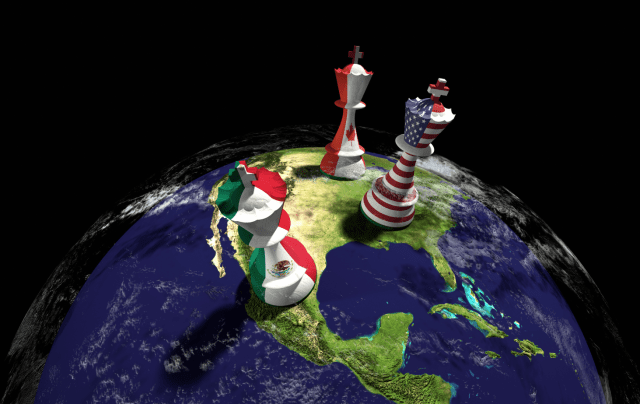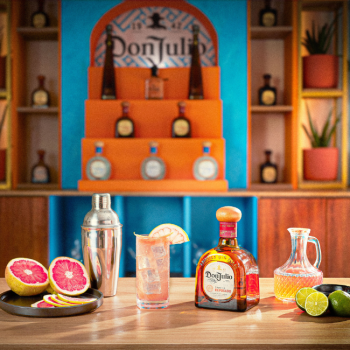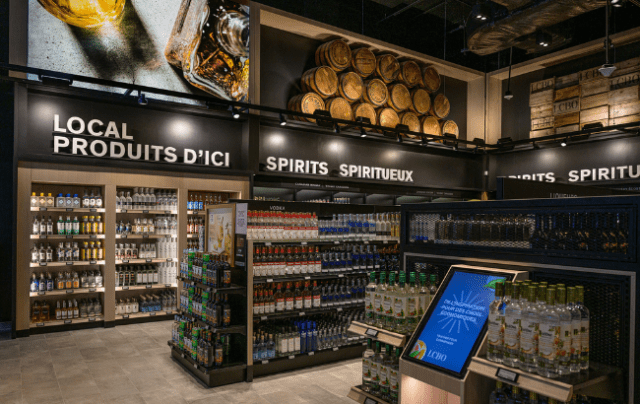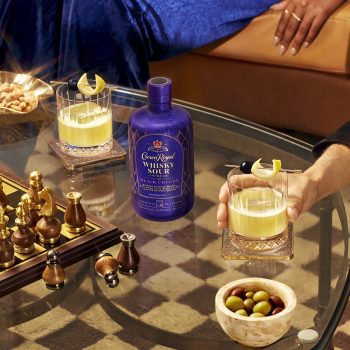Tariffs and tactics: what’s the next move?
By Georgie CollinsComing into effect today (4 March), President Trump’s 25% tariffs on imports from Canada and Mexico are set to play havoc with the spirits industry. Here, we examine how brands have been preparing, and what moves are likely to come next.

*This feature was first published in the March issue of The Spirits Business magazine.
While the US, Mexico and Canada fight it out on the latest trade‐war battlefield, the spirits industry has found itself trapped in a tariff crossfire, forced to be a pawn in a seemingly never‐ending pissing contest.
After hitching his wagon to tariffs during his presidential campaign, Donald Trump signed an executive order imposing 25% tariffs on imports from Mexico and Canada on 1 February – a move destined to have disastrous effects on the spirits industry.
However, as is the unpredictable nature of the sitting president, in the mere hours between opting to cover this story and starting my research, the former reality TV star had offered his neighbours to the north and south a 30‐day stay of execution, and with it, the spirits industry gained a month‐ long opportunity to consider its next moves.
But just how much harm can be avoided in a month? While the car crash may have been put into slow motion for now, the wall is still ahead of us.
As we went to print, Trump took to social media to confirm these tariffs would become reality on 4 March – but then what?
Damage control
John Wrenn, chief operating officer of US distributor MHW, believes that with tariffs initially delayed, businesses will likely have revisited the questions they asked themselves when the threat was first made in November – whether or not to ‘beat’ the tariff and bring excess inventory into the US. However, he says, “while beating the tariff may result in paying less tax and duty on import, it could cost a business more total dollars”, due to higher inventory carrying costs than would have otherwise been required.

John Trainer, managing director of Paradise Spirits, owner of El Tequileño Tequila, agrees that “over‐importing comes with risks, including cash‐flow strain, distributor‐warehouse limitations, and potential discounting that could impact brand positioning.” As such, he says El Tequileño has been “carefully assessing demand by segment, and working closely with our partners to avoid surplus issues while maintaining steady supply.”
Meanwhile, during February’s H1 2025 earnings call, Diageo’s chief financial officer, Nik Jhangiani, said the firm has done “considerable contingency planning over the last few months, focused on what we can control”.
Given the company’s extensive supply chain and advantaged portfolio, he said Diageo had several avenues it could consider to alleviate the potential impact, including pricing, promotion and inventory management, supply chain optimisation, and reallocation of investments.
Trainer said El Tequileño is taking a similar “multi‐pronged approach”, which includes “optimising logistics, improving operational efficiencies, and leveraging our existing infrastructure to maintain margins without sacrificing quality”.
Looking beyond the US is also on the cards for the Mexican brand. “While the US remains a priority, we are expanding our presence in Europe, Asia, and other emerging markets where premium Tequila demand is growing. This diversification helps balance risk and ensures long‐term stability,” Trainer says, noting the brand is in 35 markets.
Meanwhile, Dan Butkus, CEO of Santo Spirits, says Tequila brands could take the opportunity to use the increased margins created by agave’s recent dip in price caused by overplanting to offset the tariffs.
Minimise the impact
Ryan Malkin, principle attorney at Florida’s Malkin Law, advises there may also be scope for companies to renegotiate the terms of their existing supplier contracts to minimise the impact: “See whether the contract has a provision that allows the supplier to increase prices on a certain number, say, 120 days’ notice. If there is no provision that allows for price changes without cause, look at whether pricing can be modified based on extenuating circumstances, including cost of goods and tariffs. The parties can always negotiate pricing that works for both buyer and seller. After all, the buyer is not likely to continue to purchase if it is going to lose money due to the tariffs.”
It is not just Mexican and Canadian spirits producers that may be looking at damage limitations, with many US distillers reliant on imports from Canada for their own production. Tennessee’s Uncle Nearest and Vermont’s WhistlePig each source the rye for their whiskeys from north of the border, and while both were reluctant to comment on the matter while the future remains so uncertain, with the threat of a 25% increase on their raw material costs imminent, it’s a difficult time for their finance teams, who may be looking closer to home for their rye going forward.
While producers can look to offset looming cost increases, additional trade fluctuations are always bubbling under the surface, especially in the form of punitive tariffs.
During his first term, Trump placed tariffs on steel and aluminium imports, citing national security concerns. These were met with the EU’s retaliatory 25% tariff on American whiskey, which, according to the Distilled Spirits Council of the US (Discus) caused whiskey exports to the region to fall from US$552m in 2018 to US$440m in 2021 – approximately 20%. When those tariffs were suspended, Discus said exports rebounded to US$705m by 2023. However, that suspension will only last until the end of this month, unless an agreement in the dispute can be reached. If not, the EU will reimpose its tariff at a higher rate of 50%. Given the president has now said 25% tariffs on both metals will come into effect on 4 March “without exceptions or exemptions”, a truce seems unlikely.

Unfortunately, this style of trade war has set a damaging precedent, with a tit‐for‐tat mentality that has already seen Canada retaliate by threatening its own tariffs on the US worth CA$155bn (US$106.6bn), and removing American spirits from retail shelves, resulting in US producers needing to find a market for more than CA$1bn worth of products currently shipped to Canada.
This, says Lauren Power, sales and marketing development at Toronto‐based Tre Amici Imports, has created animosity among American brands, as they feel they are being “unfairly punished for tariffs outside of their control”. As a result, she predicts “the US will impose additional tariffs and, as a consequence, Canada will impose tariffs on all alcohol products from the US”. A lose‐lose situation for all.
Paying the price
It is often the consumers’ wallet that suffers the deepest wound in a trade war. Wrenn says as the alcohol industry faces continued headwinds in 2025, “the decision whether to pass cost increases associated with potential tariffs to consumers becomes that much more challenging, as it could further limit sales volumes. Some companies may be equipped to absorb cost increases from tariffs for a period of time, and they might choose to do this to attempt to take volume from competitors who may be passing the cost increases to consumers. But other, likely smaller, companies may not have the luxury of absorbing these costs as their margins are already tight, leaving them no choice but to pass some or all of the tariff on to the consumer and hope it doesn’t negatively impact sales volumes too much.”

Diageo, whose stable includes Casamigos and Don Julio Tequilas, as well as Canadian whisky Crown Royal, estimates it will take a US$200m hit to its operating profits in its next financial quarter if the tariffs come into effect, on account of 45% of its net sales in the US being derived from products made in Mexico and Canada.
Jhangiani suggests the company might be able to cover “about 40%” of that hit, before needing to consider increasing its prices. According to Reuters, analysts have estimated Crown Royal could rise in price by as much as 10%.
Cheaper spirits
Of course, consumers could mitigate these additional costs themselves by trading down to cheaper spirits, which will mean more bad news for the big players like Diageo. Should its consumers shift away from brands such as Don Julio, it could cost the British firm up to US$600m per year, or 3% of group sales, estimates Fintan Ryan, analyst at Irish stockbroker Goodbody.
It’s not just in stores where prices will increase. Consumers face higher prices in the on‐trade, too. Jeffrey Morgenthaler, Oregon‐ based bar owner and author of The Bar Book, warns that “with the economy simultaneously taking a dive and people having less money to spend on luxuries like drinking”, consumers likely won’t respond well to extreme price hikes for their cocktails. But bars can’t be expected to bear the brunt of these tariff‐led costs, so to alleviate them, aside from passing them on, Morgenthaler suggests we may start to see increased use of “lower‐quality mixto Tequilas and mezcals, especially in cocktails. There are also domestic agave spirit alternatives that I’m sure will rush in to fill the void left in the market, as well.”

Furthermore, just as producers may have looked at exporting their spirits into the US ahead of the tariffs, some bars may have filled their stockrooms in preparation, too. “Bars that can afford it, and that have space, are already stockpiling Tequila and mezcal at the current prices,” he says. “Corporate chain bars are going to be fine for a little while, and smaller locally owned businesses are going to be feeling this in a much more serious way. In short, that name‐brand Margarita could cost you US$12 at the ‘Mexican’ restaurant at the mall, while the same Margarita at an authentic mom‐and‐pop cantina could be twice the price, or even nonexistent.”
Wake-up call
With Trump having confirmed last month that he would push on with his tariff plans for Canada and Mexico from 4 March as many have feared, there has never been a better time for the industry to band together.
“Increased involvement in industry associations and lobbying efforts is more critical than ever,” says Gino Santos, co‐founder of wine‐based ‘liquor’ brand Premium Blend. “Smaller businesses often neglect the political side of their industry, but these tariffs serve as a wake‐up call. A collective, multi‐billion‐dollar‐industry voice stands a far better chance of influencing policy than isolated efforts from individual companies.”
Related news
Ten biggest moments in gin history
